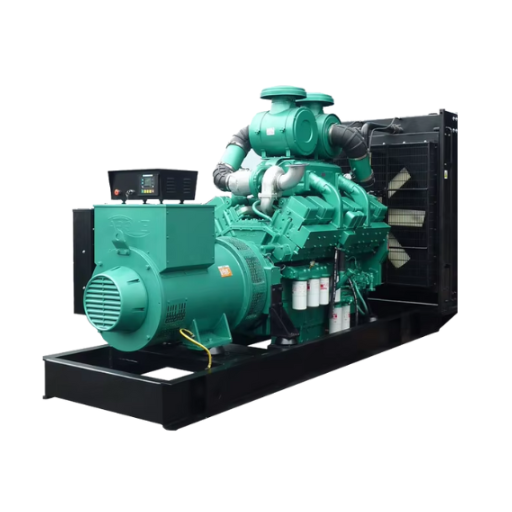Commercial generators are a critical component for businesses, ensuring an uninterrupted power supply during outages or emergencies. However, like any complex machinery, these systems require regular maintenance to operate efficiently and avoid costly failures. This guide provides a detailed overview of essential maintenance practices, key components to monitor, and long-term strategies to optimize the performance and lifespan of your generator. Whether you manage a single facility or multiple sites, understanding the vital aspects of generator upkeep will help mitigate risks, reduce operational downtime, and safeguard your business continuity.
Why is regular maintenance crucial for commercial generators?
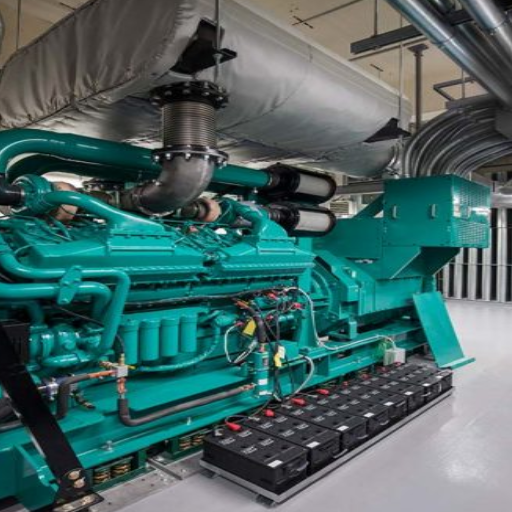
Ensuring reliability during power outages
My dependence on the generator for reliable power is backed by ensuring maintenance of the machine through monthly service, testing, and technical check-ups. The core elements that I check include these:
- Oil and Coolant Levels: Ensuring the engine oil is within recommended levels and coolant is sufficient to prevent overheating. Oil should be changed every 100-250 hours of use or as per manufacturer instructions.
- Battery Voltage: Verifying the battery is fully charged and the terminal connections are clean and secure. Most systems operate effectively within an optimal voltage range of 12.6V-13.8V.
- Frequency and Voltage Output: The generator must produce stable electricity with a frequency of 60Hz and maintain a voltage output within the range designed for single-phase systems (120/240V) and three-phase systems (208V/480V).
- Fuel Quality and Levels: Inspect fuel for contamination and check the quantity regularly. For now, one example would be using diesel fuel within a six to twelve-month period to prevent its degradation.
- Control Panel Indicators: Any reported diagnostic codes, alerts, or performance metrics that fall outside the expected range as programmed into the control panel.
Addresses proactive any gaps that emerge from the set standards and checks these to set boundaries to mitigate generator inefficacies during important times. It would drastically reduce the unfortunate chance of unwarranted failures.
Extending the lifespan of your generator
My generator’s life is increased by implementing systematic maintenance and operating procedures established by the manufacturer. This starts with proper load management, where I attempt to maintain an optimal load of 50-75% of the tested capacity for my generator set. This not only reduces stress on the generator but also helps with fuel efficiency. In addition, routine oil and filter changes are done as per manufacturer recommendations or usage, typically after 100 to 200 hours of use, as this helps slow down the engine wear caused by the impurities.
Additionally, I use only high-quality diesel fuel and stabilize it with additives if storage extends beyond six months, as fuel degradation can lead to clogged injectors and reduced efficiency. I consistently monitor generator coolant levels, ensuring the concentration of ethylene glycol is between 30% and 50%, as per standard industrial recommendations, while maintaining a coolant pH level between 8 and 11 to prevent corrosion.
At long last, I make sure to arrange load bank tests at least every year for standby units to verify generator capability in simulated conditions. I can pinpoint and resolve small problems by consolidating active logs and examining performance indicators. These areas of concern, along with other minor issues, are essential to address to make sure the unit performs well long into the future.
What are the key components of a commercial generator maintenance plan?
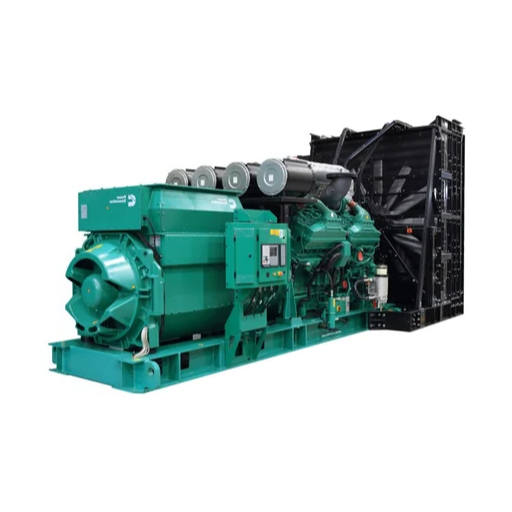
Developing a comprehensive maintenance schedule
To develop a comprehensive maintenance schedule for a commercial generator, I start by identifying critical maintenance intervals and actions based on the manufacturer’s guidelines, operational demands, and environmental conditions. Key components include:
- Inspection Schedule: Conducting visual checks should be done on a weekly or bi-weekly basis to look for any leaks, corrosion, or loose parts.
- Oil and Filter Changes: Depending on how the equipment is used, filters and engine oil need to be changed every 100 to 250 hours or at least once every year.
- Coolant System Maintenance: Check the coolant levels, pH balance, and freeze points every six months to ensure that the temperature is kept at the right level.
- Battery Checks: In addition to replacing batteries every 3-5 years as needed, conduct load tests to check the state of charge and perform monthly verifications.
- Fuel System Inspection: Use fuel stabilizers to stop sludge build-up in fuel tanks and conduct regular inspections on tanks. The fuel tanks need to be cleaned at least once every year.
- Air Filter Replacement: To ensure that air filters are at their optimal, the filters should be checked every quarter and replaced whenever necessary.
- Verification: Each year the generator should be checked to see how it performs under full capacity by conducting load bank testing to confirm that it functions as a working generator.
- Control Panel Diagnostics: Each month, the functionality of the electronic control systems is checked by reviewing errors, alarms, and operational logs for error codes.
Every measure I take is aligned with specific technical standards, for example, IEEE 1547 regarding Operation and Performance or ISO 8528 regarding General Requirements. These data-driven intervals, allow for proactive mitigations which lead to long-term reliability for generators.
Essential maintenance tasks for different generator types
In diesel generators, I concentrate on processes that make sure fuel is effectively utilized burnt. This entails replacing fuel filters regularly, thoroughly inspecting fuel injectors for any signs of wear, and verifying that fuel meets ASTM D975 fuel quality standards. Lubrication oil is often checked and replaced every 250 operational hours. It is done this way because as a generator runs, oil viscosity needs to be adjusted so that the degree of mechanical degradation is lowered. Cooling system components are checked for coolant temperature and ensure it stay on design-rated value to avoid overheating the unit, typically from 70 to 90 °C.
For natural gas-powered generators, monitoring is done to check spark plug performance, as well as ensure that ignition timing and air-to-fuel ratios are correct. The goal is to ensure emissions produced do not exceed the EPA limits while maximizing the power output efficiency. I also check exhaust temperature and other operating temperatures of the unit which is always guided by the OEM, 370 – 540 °C.
In the case of hybrid or renewables-integrated systems, I analyze the synchronization of the inverters and the energy storage systems. The battery banks are evaluated on state of charge (SOC) retention, depth of discharge (DoD), and capacity retention, and the additional value SOC has to be above for efficient operation. In addition, I check that the inverters comply with IEEE 1547 grid codes for synchronization and fault event response times.
By following these custom maintenance, I guarantee that every generator type functions to its design specifications and meets the best regulatory practices.
Creating maintenance checklists for technicians
To create effective maintenance checklists for technicians, I focus on operational requirements to ensure thorough and efficient inspections. For instance:
- Battery Energy Storage Systems (BESS): Include crucial SOC checks, ensuring at least 80% for optimal performance, and DoD compliance with manufacturer guidelines to maximize battery lifespan. Capacity retention should also be checked periodically against the expected degradation curve.
- Generators: List inspection points covering fluid levels (coolant, oil, fuel), functioning of control panels, and condition of exhaust systems to avoid compliance gaps or operational shortcomings.
- Photovoltaic (PV) Systems: Verify inverter-synchronous operation to the grid code at IEEE 1547 and the response times to relevant regulatory fault protocols. Also, confirm system efficiency using the photovoltaic performance ratios.
- Mechanical Equipment: Incorporate torque specifications, lubrication schedules, and tolerances to wear of moving parts against the manufacturer’s specifications.
Every item in the checklist stems from standard operating procedures and industry benchmarks to ensure system integrity, and compliance, and help technicians schedule maintenance more effectively.
How often should you service your commercial generator?
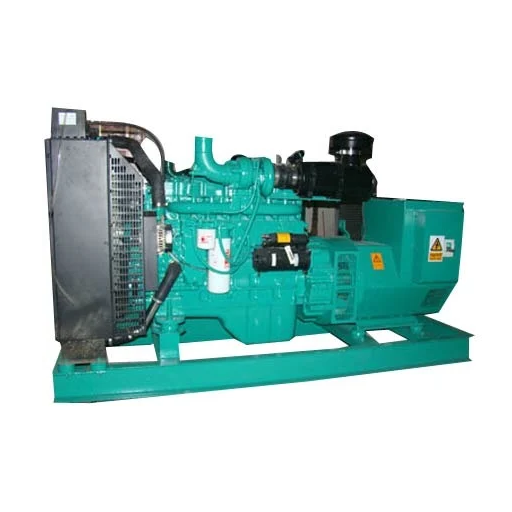
Factors affecting maintenance frequency
In this scenario, the proper functioning of your commercial generator directly influences the frequency of servicing it. I always take these factors into account:
- Usage Hours: Running continuously or for long periods requires more servicing. For example, I like to cover units working over 500 hours of servicing every half a year, as suggested by the manufacturer’s operational hours recommendations.
- Load Levels: Over 80% load capacity means more frequent inspections. I must admit, high load operations greatly increase strain on any given component therefore, I am regularly checking coolant levels, electrical connections, and other parts on the list to avoid overheating and excessive wear and tear.
- Environmental Conditions: Being in very dusty or humid conditions, and especially in extremes of temperature means that filter clogging and oil breaking down will occur much faster. In my case, I would prefer to have oil changes quarterly and air filter checks, instead of the 1-6 month standard changes.
- Fuel Type and Quality: Different fuel types mean different servicing needs. In the case of diesel units, I make a point to change fuel filters every 300 hours because diesel fuel gunk is bound to accumulate within the system. Natural gas units allow longer time frames but still require regular checks on spark plugs.
Through careful observation of these factors, I can customize maintenance activities to the specific technical and operational needs of each generator. This approach is designed for minimizing downtimes and prolonging the life of the equipment.
Recommended service intervals for industrial generators
- Changing the oil and the oil filter: It is crucial to perform oil and oil filter replacement services on generators after 250 to 300 hours of operation. This helps with easing lubrication and minimizing wear on the engine while in operation where there are thermal and mechanical stressors.
- Changing the fuel filter: For diesel generator sets, the fuel filter needs to be replaced every 300 hours due to the presence of contaminants which is a common issue in sediment and water that usually settle into the fuel systems.
- Changing and cleaning the air filter: Air filters should be inspected and cleaned after every 400 hours of operation. Some air filters may require replacement after 400 hours instead, especially if the generator is used in very dirty environments. Ensuring the cleanliness of the airflow guarantees efficient operation and minimizes strain on the engine.
- Coolant system checkup: The coolant level should be checked every 1,000. The coolant itself should be substituted every 2,000 to 3,000 hours of service. Always check the pH and coolant level to avoid corrosion and prevent overheating.
- Changing the spark plugs: For natural gas-powered generators, spark plugs should be changed every 1000 hours. Performance of the spark plugs tends to deteriorate with time and so does the efficiency of the engine and reliability of the engine and the generator.
- Changing batteries: Batteries and terminals need to be checked after every 100 hours of generator use. The voltage and charge performance should be tested every three months. Also, the reliability of starting the generator predominantly depends on the battery system.
These factors are influenced by factors such as the level of load, the temperature of the surrounding area, and the type of fuel being used. Adhering to these principles makes it possible to maximize the performance of the equipment and minimize the chances of unexpected failures that lead to expensive repairs.
Balancing preventive maintenance and operational needs
Balancing the needs of preventive maintenance with operations requires detailed planning aimed at achieving equipment reliability without interfering with crucial functions. Usually, maintenance drills are done during downtimes or low-demand periods. This optimizes operations because any disruption to workflows is minimal. For instance, battery inspections and charge tests can be done at intervals recommended by the manufacturer. The recommended intervals ensure the device’s ability to start reliably.
- Load Levels: Operating loads must not exceed canonical limits prescribed by the design of generators and other important equipment. For example, a nominal load for most generators is 80% of the capacity.
- Temperature Thresholds: During operations, ambient temperatures that are often between 10°C to 40°C (50°F to 104°F) should be adhered to to maintain the capability of components.
- Fuel Quality and Type: The use of diesel fuel has to satisfy certain standards defined, e.g., ASTM D975 so that combustion problems and injector breakdown do not occur.
By systematically adhering to these practices and utilizing diagnostic tools where applicable, I maintain a balance between preventive care and operational efficiency, reducing risk and extending equipment lifespan.
What are the most common issues faced during generator maintenance?
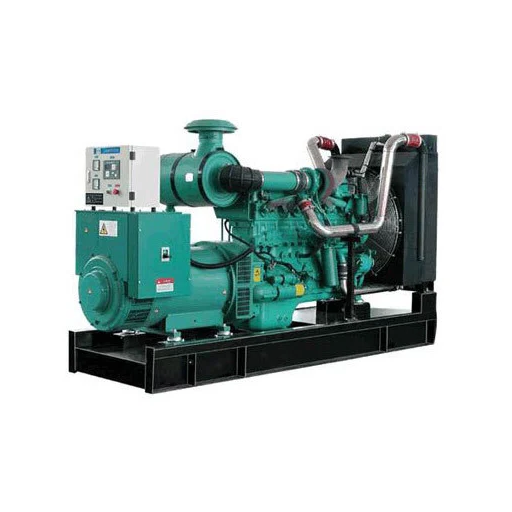
Troubleshooting fuel system problems
Fuel system problems are often traced back to a few key issues, which I address systematically to ensure accurate troubleshooting and resolution. The most common problems include fuel contamination, improper fuel pressure, and air in the fuel lines.
- Fuel Contamination: Blockages or corrosion can result from the presence of contaminants like water, dirt, and microbial growth. Regularly inspecting and replacing fuel filters as per the manufacturer’s requirements and utilizing a diesel fuel testing kit enhances observation quality.
- Improper Fuel Pressure: Undersupply or oversupply of fuel leads to starting difficulties, engine stalling, and negative performance on the engine. To determine the specific rod within the specified ranges of the manufacturer, I use a Fuel pressure rod and set it to the right level, and for the diesel systems, the level is set between 20-40 PSI.
- Air in Fuel Lines: Air can disrupt continuous fuel flow into the combustion chamber because of loose connections or improperly sealed fittings. I conduct careful examination of fuel lines and fittings using vacuum testing for places where I suspect leaks to ensure that the fittings are tightly sealed.
By conducting routine maintenance proactively, I maintain an efficient fuel system and minimize downtime related to generator operation.
Resolving electrical system complications
The complex issues surrounding an electrical system can be solved with a methodical diagnosis involving examining the constituents within the generator. The most common issues encountered are related to battery defects, wiring issues, and control panel problems.
- Battery and Switching Power Supply: Weak batteries and batteries that are about to fail are two major problems that are expected with the generator. When there is no load, I check whether the voltage across the lead-acid battery is between 12.6 and 12.8 volts using a multimeter. The voltage output from the alternator to the charging system should be between 13.8 to 14.4 volts when a load is applied.
- Wiring Issues: Electrical connections that are loose, corroded, or damaged can hamper the overall performance of the device. I do continuity testing with the help of a digital multimeter to locate and mark areas with breaks or high resistance in the wiring harness. The insulation resistance rating of the wires should exceed 1MΩ to avoid short circuits. Alternate actions can be taken such as tightening the connections, cleaning terminals, or replacing wires with faulty ones as per the standards prescribed.
- Control Panel Diagnostics: Malfunctioning control panels may cause sporadic startup or shutdown issues. If possible, I attend to error codes on the control module and check the circuit integrity against a schematic diagram. To ensure proper relay function, the resistance between relay contacts should remain under 100 milliohms to avoid incurring a voltage drop.
Minimizing the risk of unnecessary breakdowns and ensuring dependable generator performance is attainable by resolving the issues associated with the electrical system by taking precise measurements and abiding by the technical specifications.
How can you implement an effective preventive maintenance program?
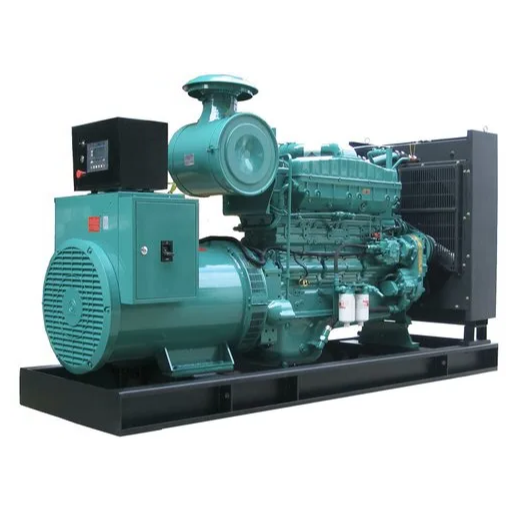
Conducting regular inspections and load tests
To implement a good preventive maintenance program, regular inspections, and load tests must be done to make sure the generator is working properly under normal and maximum load conditions. Start with checking fuel systems, cooling systems, exhaust pathways, and electrical connections for any signs of damage, corrosion, or failure points. Clean components that require it, and tighten all the needed connections.
- Voltage Stability: While performing load tests, check if the voltage is maintained at ±5% of the rated output value. Any deviations are issues for the voltage regulator or alternator.
- Frequency Stability: To avoid malfunctioning or inefficient operations of equipment, frequencies must be maintained at ±0.1 Hz of the standard (50 Hz or 60 Hz depending on the region).
- Load Capacity: Increasing loads must be applied gradually until 75-100% of the rated generator output is reached to confirm that the system can withstand the operational demands without overheating or becoming unstable.
- Oil Pressure and Coolant Temperature: Check if the oil pressure remains consistent according to the manufacturer specifications (15-40 psi for many industrial models) Cooling temperatures must also be maintained between 180-210 to prevent overheating.
- Harmonic Distortion: Damage to sensitive electrical equipment can be caused by high THD levels so it is important to check low total harmonic distortion (THD) to not exceed 3-5%.
These frequent inspections and evaluations can help mitigate concerns and enhance the reliability of the system while increasing the lifespan of your generator. In addition, you would significantly enhance system reliability. Document all findings and maintenance actions to establish a comprehensive maintenance history.
Maintaining proper fluid levels and replacing consumables
Fluid levels and consumable replacements are core aspects of maintaining a generator. The serviceman must confirm that the quality and quantity of engine oil match the ideal ranges as indicated in the generator’s manual. Depending on the particular model in question, oil replacement is usually conducted every 100 operational hours up to a maximum of 250 hours. Also, the serviceman should use oil that is compatible with the generator’s brand. Industrial generators, for example, are commonly compatible with oil type SAE 15W-40.
Furthermore, it is crucial to check the level of coolant in the radiator or coolant reservoir and confirm it is within the recommended levels. To ensure the prevention of thermal regulation and corrosion, the manual’s specified coolant mix, typically 50/50 in the proportion of water to ethylene glycol, must be verified and maintained. Top off or alter the coolant as required particularly during regular maintenance.
To further prevent contamination, routine inspections and replacements of oil filters and both fuel and air filters need to be implemented. As for fuel filters, these should be changed after every 300-400 operational hours while for air filters the efficiency reduces after 500 hours of use. There should be no leniency regarding the replacement schedule of these components, so records for every substitution made should be meticulously kept as they are imperative for future repairs.
By consistently following the prescribed technical guidelines, I ensure that my generator remains reliable and operates within its intended specifications.
Reference sources
Frequently Asked Questions (FAQs)
Q: Why is generator service important for commercial and industrial generators?
A: Generator service is crucial for maintaining the performance of the generator and ensuring reliable backup power. Regular maintenance helps prevent unexpected breakdowns, extends the lifespan of your equipment, and ensures your standby power system is ready when you need it most. A proper maintenance plan also helps optimize fuel consumption and reduces the risk of costly repairs.
Q: How often should I schedule industrial generator maintenance?
A: The frequency of industrial generator maintenance depends on the type of generator, its usage, and the manufacturer’s recommendations. Generally, it’s important to keep your generator maintained with monthly visual inspections, quarterly servicing, and annual comprehensive checks. For standby generators, even if rarely used, regular maintenance is essential to keep them in top condition for emergency power situations.
Q: What are the key components to check during a diesel generator service?
A: During a diesel generator service, key components to check include the oil level, fuel system, cooling system, exhaust system, and control panel. Technicians should also inspect the battery, air filters, and belts. For diesel generators, fuel polishing may be necessary to prevent fuel degradation. Regular checks of these components are vital for the proper maintenance of your generator.
Q: How can I create a maintenance schedule for my commercial generator?
A: To create a maintenance schedule for your commercial generator, start by consulting the manufacturer’s manual for specific maintenance requirements. Include monthly visual inspections, quarterly servicing, and annual comprehensive checks. Factor in the generator’s usage, environment, and type. Consider working with professional service technicians to develop a preventive maintenance plan tailored to your specific piece of equipment.
Q: What are common signs that my generator needs repair?
A: Common signs that your generator needs repair include unusual noises, excessive vibration, decreased power output, frequent shutdowns, visible leaks, or warning lights on the control panel. If you notice any of these issues, it’s important to have a professional perform a generator repair promptly to prevent more serious problems and ensure your backup power system remains reliable.
Q: How does regular maintenance impact the performance of the generator?
A: Regular maintenance significantly impacts the performance of the generator by ensuring optimal fuel efficiency, reducing wear and tear on components, and maintaining power output capacity. It helps prevent unexpected failures, extends the generator’s lifespan, and ensures it can provide reliable emergency power when needed. Proper maintenance also helps maintain compliance with local regulations and may be required to keep warranties valid.
Q: What should be included in a visual inspection of a standby generator?
A: A visual inspection of a standby generator should include checking for any physical damage, leaks, or loose connections. Inspect the oil level, coolant level, and fuel level. Check the battery connections and charge status. Examine air intakes and exhaust systems for obstructions. Look for any warning lights on the control panel. This regular check helps identify potential issues early and keeps the generator ready for use.
Q: How can I ensure my generator is ready for emergencies?
A: To ensure your generator is ready for emergencies, implement a comprehensive preventive maintenance plan. This should include regular inspections, timely servicing, and load bank testing. Keep fuel fresh and tanks full. Conduct periodic test runs to verify proper operation. Train staff on generator operation and emergency procedures. By following these steps, you can maintain a reliable backup power system for when you need it most.
Q: What are the benefits of using professional field service for generator maintenance?
A: Using professional field service for generator maintenance offers several benefits. Experienced technicians have specialized knowledge of different generator types and can provide a complete guide to maintenance. They can identify potential issues early, perform necessary repairs, and ensure your generator meets all safety and performance standards. Professional service also helps maintain warranty coverage and can provide emergency support when needed.
Q: How does proper generator maintenance contribute to environmental responsibility?
A: Proper generator maintenance contributes to environmental responsibility by optimizing fuel efficiency, reducing emissions, and preventing fuel or oil leaks. Well-maintained generators operate more cleanly and efficiently, minimizing their environmental impact. Regular maintenance also extends the lifespan of the generator, reducing waste from premature equipment replacement. Additionally, proper maintenance ensures compliance with environmental regulations regarding emissions and noise levels.



